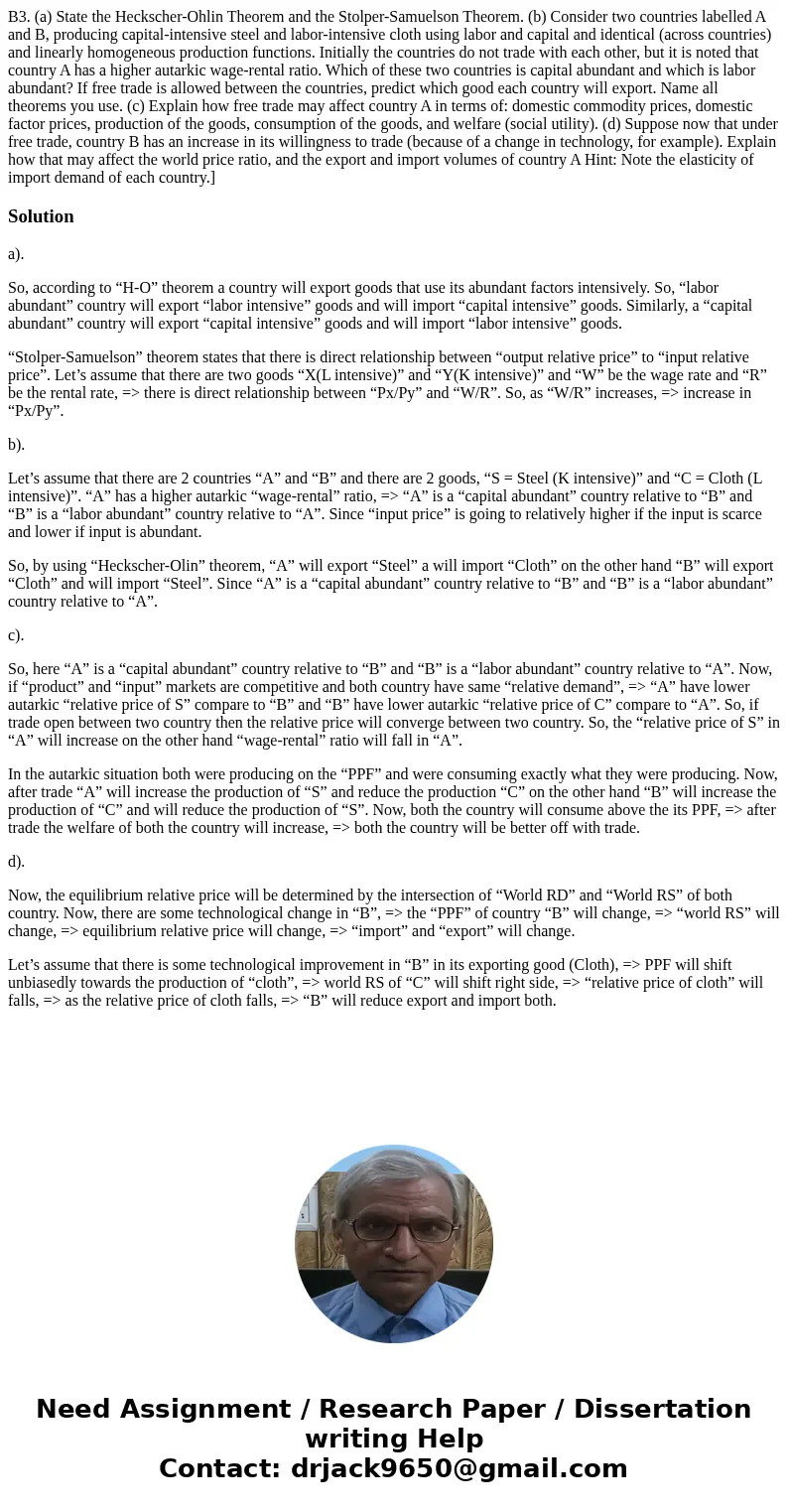B3 a State the HeckscherOhlin Theorem and the StolperSamuels
Solution
a).
So, according to “H-O” theorem a country will export goods that use its abundant factors intensively. So, “labor abundant” country will export “labor intensive” goods and will import “capital intensive” goods. Similarly, a “capital abundant” country will export “capital intensive” goods and will import “labor intensive” goods.
“Stolper-Samuelson” theorem states that there is direct relationship between “output relative price” to “input relative price”. Let’s assume that there are two goods “X(L intensive)” and “Y(K intensive)” and “W” be the wage rate and “R” be the rental rate, => there is direct relationship between “Px/Py” and “W/R”. So, as “W/R” increases, => increase in “Px/Py”.
b).
Let’s assume that there are 2 countries “A” and “B” and there are 2 goods, “S = Steel (K intensive)” and “C = Cloth (L intensive)”. “A” has a higher autarkic “wage-rental” ratio, => “A” is a “capital abundant” country relative to “B” and “B” is a “labor abundant” country relative to “A”. Since “input price” is going to relatively higher if the input is scarce and lower if input is abundant.
So, by using “Heckscher-Olin” theorem, “A” will export “Steel” a will import “Cloth” on the other hand “B” will export “Cloth” and will import “Steel”. Since “A” is a “capital abundant” country relative to “B” and “B” is a “labor abundant” country relative to “A”.
c).
So, here “A” is a “capital abundant” country relative to “B” and “B” is a “labor abundant” country relative to “A”. Now, if “product” and “input” markets are competitive and both country have same “relative demand”, => “A” have lower autarkic “relative price of S” compare to “B” and “B” have lower autarkic “relative price of C” compare to “A”. So, if trade open between two country then the relative price will converge between two country. So, the “relative price of S” in “A” will increase on the other hand “wage-rental” ratio will fall in “A”.
In the autarkic situation both were producing on the “PPF” and were consuming exactly what they were producing. Now, after trade “A” will increase the production of “S” and reduce the production “C” on the other hand “B” will increase the production of “C” and will reduce the production of “S”. Now, both the country will consume above the its PPF, => after trade the welfare of both the country will increase, => both the country will be better off with trade.
d).
Now, the equilibrium relative price will be determined by the intersection of “World RD” and “World RS” of both country. Now, there are some technological change in “B”, => the “PPF” of country “B” will change, => “world RS” will change, => equilibrium relative price will change, => “import” and “export” will change.
Let’s assume that there is some technological improvement in “B” in its exporting good (Cloth), => PPF will shift unbiasedly towards the production of “cloth”, => world RS of “C” will shift right side, => “relative price of cloth” will falls, => as the relative price of cloth falls, => “B” will reduce export and import both.

 Homework Sourse
Homework Sourse